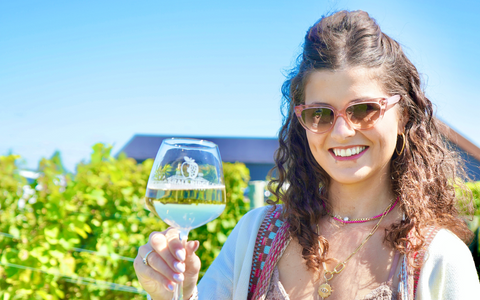

Low Residual Sugar Wine Fun Facts
Discovering fun facts about low residual sugar wine can be something enticing for wine lovers of all types. Whether you prefer wine with no residual sugar or just can't wrap your head around the concept, this article is for you.
From measuring sweetness to controlling fermentation and discovering global winemaking traditions, these low residual sugar wine fun facts will not only expand your wine knowledge but also enhance your appreciation for the complexities that lie within every sip.

Fun Fact 1: Understanding Residual Sugar in Wine
You may be wondering what residual sugar is and how it ends up in your wine. Residual sugar is the natural sugars from grapes that remain in the wine after fermentation is complete. This residual sweetness can impart various flavours and textures, influencing the overall profile of the wine.
Fun Fact 2: Measuring Sweetness - Grams per Litre Scale
The sweetness of measuring residual sugar in wine is measured in grams per litre, where 10 grams equals 1% sweetness. This scale provides a precise way to communicate the sweetness levels in a wine bottle, allowing consumers to make informed choices based on their preferences. It's a handy tool for beginners, enthusiasts and winemakers alike.
Fun Fact 3: Variation in Residual Sugar Levels
Not all wines are created equal when it comes to sweetness. Explore how residual sugar levels vary based on the type of wine, with sweeter varieties starting at around 35 grams per litre. Understanding these variations can help you choose the perfect wine to suit your taste buds, whether you prefer a dry red or a sweet dessert wine.
Fun Fact 4: The Chemistry of Residual Sugars
Residual sugars and grapes are actually a combination of glucose and fructose. What happens during fermentation, is the yeast will eat those residual sugars and turn it into alcohol.
During fermentation, yeast plays a crucial role in transforming these sugars into alcohol, contributing to the wine's alcohol content. This intricate process highlights the scientific artistry involved in winemaking.
Fun Fact 5: Controlling Sweetness - Stopping Fermentation
Stopping the fermentation, by either chilling it or filtering it, is how we're going to get a sweeter wine.
Whether through chilling or filtering, this technique is key to achieving the desired sweetness in a wine. This hands-on approach allows for a level of craftsmanship that can profoundly influence the final product, creating a balance between sweetness and other flavour components.
Fun Fact 6: Global Wine Practices - Chaptalization
While Shale Ridge doesn't add sugars, some countries, like France and Germany, use this method to increase alcohol levels in less ripe grapes.
This practice has sparked debates in the wine industry, highlighting the diverse approaches and philosophies that different regions bring to winemaking.
Fun Fact 7: Beyond Grapes - Added Sugars in Wine Products
Some wine-based products, such as vermouth and sangria, incorporate added sugars and other flavourings. This exploration extends beyond the vineyards, showcasing how creativity and innovation in winemaking can lead to a myriad of delightful and unique wine tasting experiences.
How to Find Low Residual Sugar Wine
If you're on the hunt for wines with less sugar, no worries, we've got your back! Here's a laid-back guide to help you spot those low residual sugar gems without getting too technical.
Grape Guesswork: Some grapes naturally lead to drier wines. Keep an eye out for Cabernet Sauvignon, Merlot, Sauvignon Blanc, and Chardonnay - they tend to be on the less sweet side.
Ask the Wine Expert: Stuck at the wine shop? Don't hesitate to ask the staff for suggestions. They're like walking, talking wine encyclopedias and can guide you to the less sweet sips.
Winery Wisdom: If you ever find yourself near a winery, make a pit stop. Wine tastings are a goldmine for discovering wines that tickle your taste buds with less residual sugar.


Debunking the Myth: Cork vs. Screw Cap Wine Bottles











